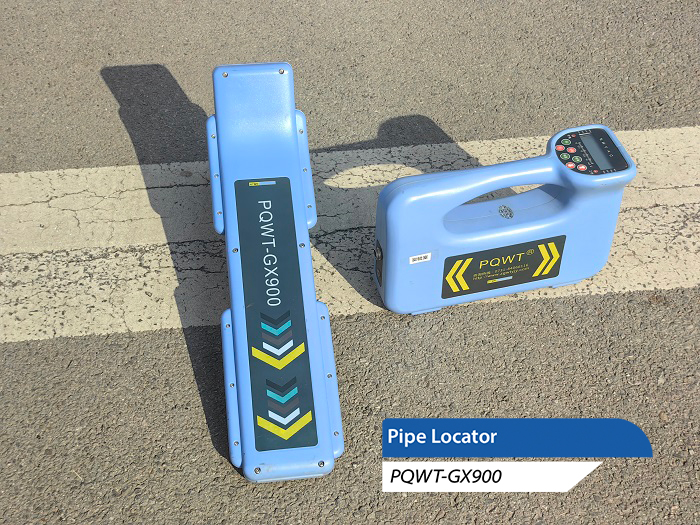The PQWT Cable Pipe Locator plays a vital role in the construction and development of businesses. Underground pipeline systems are the "blood vessels" and "nerves" of the city, which ensure the normal operation of enterprises and the needs of residents. However, due to the complexity of pipeline systems, accurately detecting the location, direction and depth of the pipeline has become a challenging task. In order to solve this problem, PQWT Cable Pipe Locator has become the right hand of engineers. However, different situations require different detection techniques. In this article, we will discuss the detection techniques of PQWT Cable Pipe Locator for three common situations.

I. Parallel Laying of Pipes
In the process of enterprise construction, often encounter multiple pipelines laid in parallel. These pipelines may be of various types such as electric power, communication, water supply and drainage. In this case, it becomes especially important to accurately distinguish the location and direction of each pipeline. In order to distinguish between two or more parallel pipes or cables, we usually use the PQWT Cable Pipe Locator electromagnetic induction method or the PQWT Cable Pipe Locator clamp method. By applying signals to each pipeline separately, we can accurately determine the location and direction of each pipeline.
Second, the large buried depth of the pipeline
In some enterprises, the pipeline buried depth is large, which brings considerable difficulties to the detection work. In order to solve this problem, we can take the following measures:
1. Expand the detection range and find the pipeline dew point. By applying the signal at the dew point, the signal-to-noise ratio can be improved, thus increasing the detection accuracy.
2. Apply the inductive PQWT Cable Pipe Locator signal at shallow burial depths. This will increase the inductive current in the pipe, improve the received signal strength, and further enhance the signal-to-noise ratio.
3. Use PQWT Cable Pipe Locator long metal wire to apply the signal. Through the double-ended connection method, you can make the PQWT Cable Pipe Locator transmitter, long wire and pipe from a current loop, thereby increasing the current strength of the pipeline to achieve the purpose of detecting deeply buried pipelines.
Third, non-excavation laying of pipelines
With the development of technology, more and more pipelines using non-excavation laying method. This laying method can reduce the damage to the ground environment and improve construction efficiency. However, it also brings new challenges to the detection work. In order to accurately detect the non-excavation pipeline, we can take the following measures:
1. Comprehensively collect the design and completion data of the non-excavated laid pipelines within the survey area and verify them in the field. This will enable us to understand the type, material, specifications and other information of the pipeline, which will provide a basis for the subsequent detection work.
2. For pre-buried cable-type empty pipes, we can use ground-penetrating radar for detection. Ground-penetrating radar can detect the distribution of underground objects through the ground, with high precision, no damage and other characteristics.
3. When the pipeline crosses the road, buildings and other places, due to the large depth of the pipeline and long crossing distance, the signal is easy to attenuate, resulting in increased detection error or unable to track the detection. In order to solve this problem, we can increase the transmission power of PQWT Cable Pipe Locator transmitter to improve the signal-to-noise ratio. At the same time, we can set up pipeline points before crossing roads and buildings, such as before and after roads and buildings, to control their direction. This allows better control of the location and direction of the pipeline and ensures the accuracy of the detection results.
PQWT Cable Pipe Locator plays an irreplaceable role in enterprise construction. Accurately locating the position, direction, burial depth and other information of the pipeline and forming detailed underground pipeline information can protect the existing pipeline and prevent damage to the pipeline during construction, which is an important guarantee for the efficient operation of enterprise production. For different situations, we should adopt different detection techniques. Only in this way can we give full play to the role of PQWT Cable Pipe Locator and improve the detection accuracy and efficiency. In the future work, we will continue to study the pipeline detection technology in depth to provide better services for the development of enterprises.








